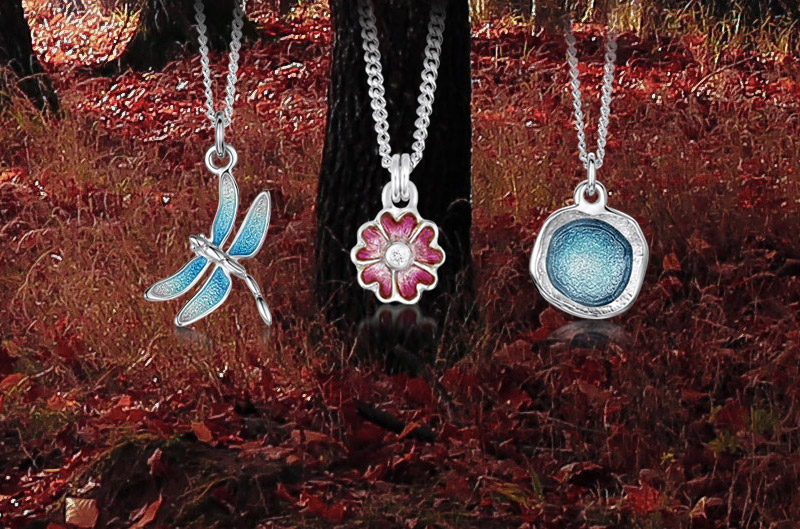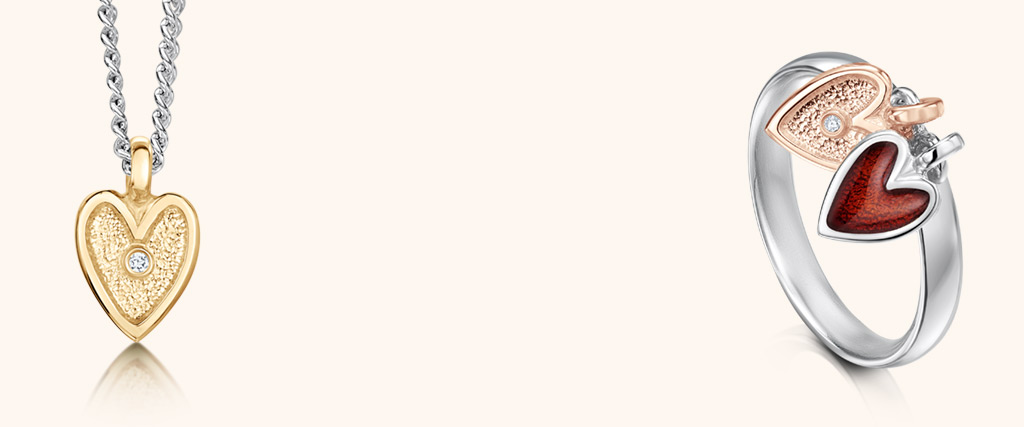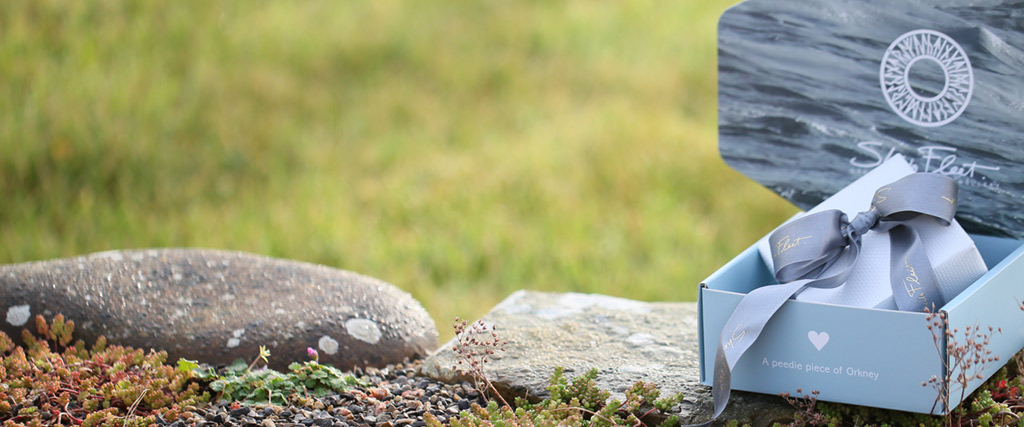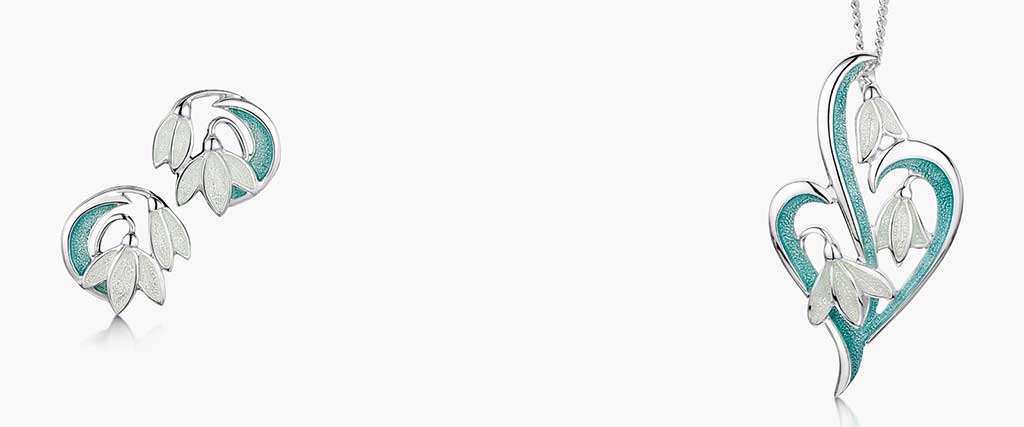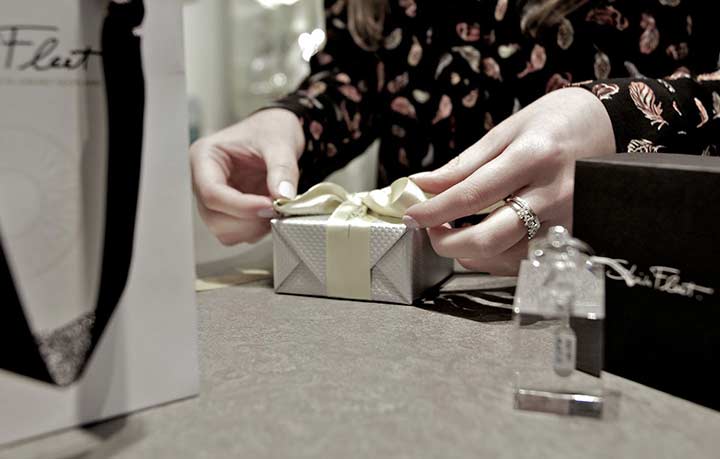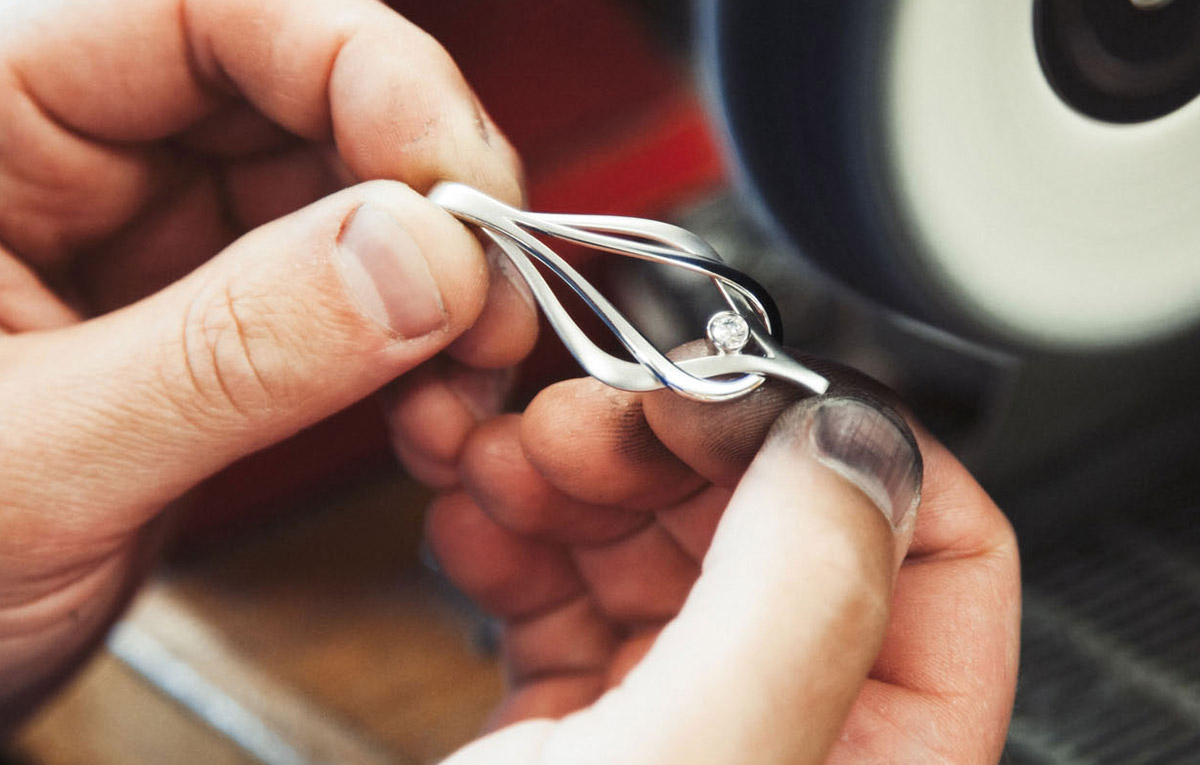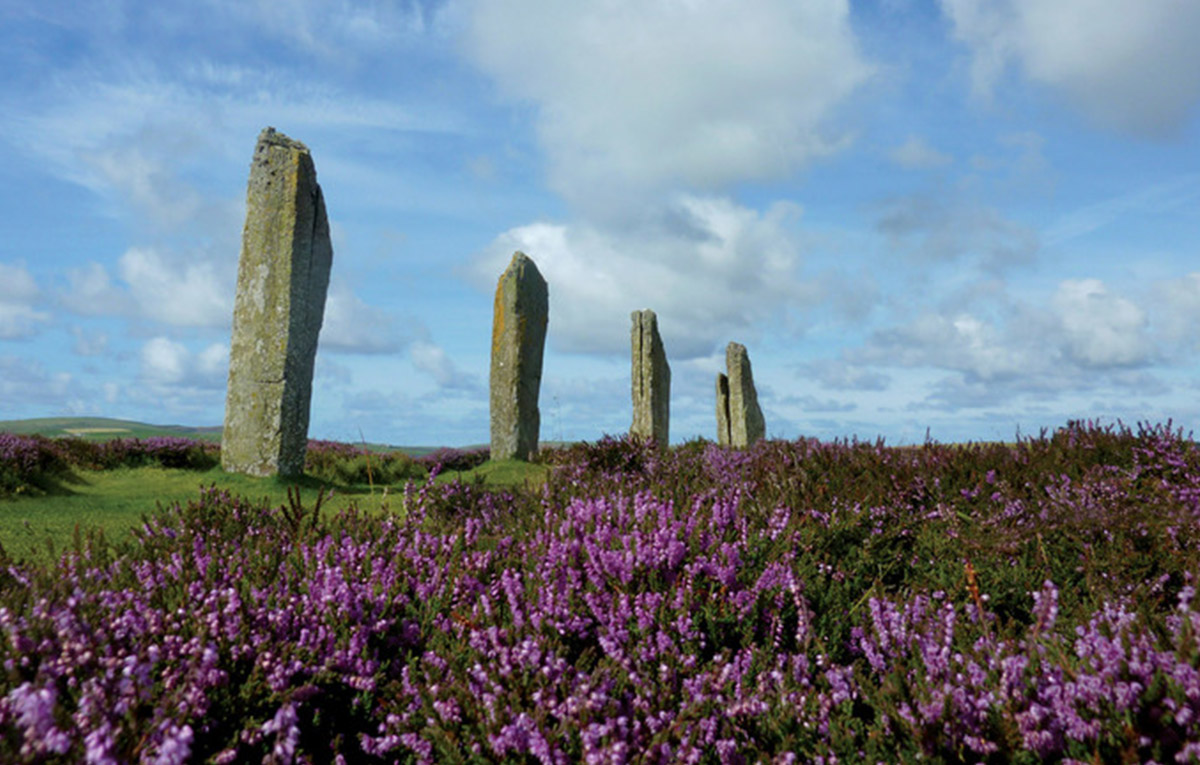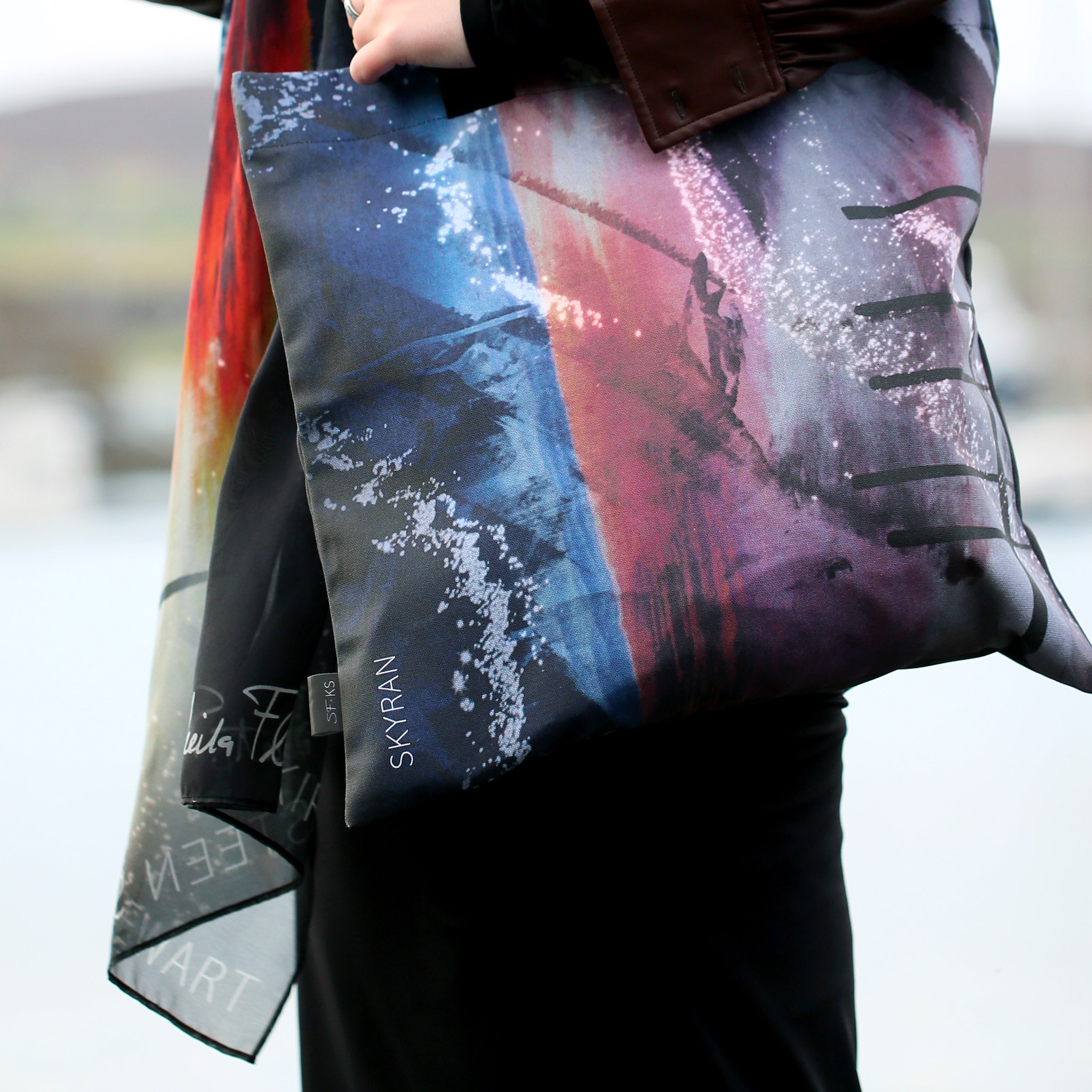
What metals are used in Sheila Fleet Jewellery?
We make our jewellery and rings in sterling silver, 9ct gold, 18ct gold and platinum. Palladium is also available on request. Each metal has its own special properties and characteristics.
We are proud to be one of only two jewellery makers in the world authorised to use official Scottish Gold from the Cononish gold mine, near Tyndrum, Scotland's only commercial gold mine. Many of Sheila's designs can be made in 18ct yellow and white Scottish Gold. If you would like more information about this exclusive precious metal, please email us at scottishgold@sheilafleet.com.
For information about the hallmarks used on our jewellery, please refer to the British Hallmarking Council's Guarantee & Dealer Notice.
Use the following navigation to jump to relevant sections of this page:
- Sterling Silver
- Sterling Silver & Enamel
- Yellow Gold
- White Gold
- Rose Gold
- Scottish Gold
- Platinum
- Palladium
Sterling Silver
We use high quality 925 sterling silver, which is comprised of 92.5% pure silver, alloyed (mixed) with 7.5% other 'base' metals, usually copper. Pure silver is relatively soft so this alloy with base metals ensures sterling silver jewellery is robust enough to wear.
The 925 metal fineness mark is stamped on our silver jewellery by the Edinburgh Assay Office and is an independent guarantee of quality. The mark is found on all our pieces of silver weighing over 7.78g as mandated by the Assay Office. (Lighter sterling silver pieces do not have this mark, but are made from the same high-quality sterling silver.)
Sterling Silver requires regular care as it will tarnish through prolonged exposure to the air and to chemicals such as perfumes, deodorants, and hairspray. (We have a fantastic guide on how to care for your jewellery, which we recommend you read.) Sterling Silver can also react with some people's skin, leaving temporary black marks. This normally settles down after a few days with light cleaning of the jewellery and the area of skin affected, but gold or platinum may be a better choice in prolonged cases.
Sterling Silver needs to be treated with care as it can be scratched easily. Most scratches can be polished out, but for this reason, silver is not normally chosen for wedding rings. Couples who want white rings usually choose white gold, palladium or platinum, all of which are harder and more scratch-resistant.
Sterling Silver & Enamel

We use the same 925 sterling silver in our enamelled silver jewellery and rings. Silver with vibrant enamel is a beautiful sight and a speciality of Sheila Fleet Jewellery. Sheila has created a wonderful range of enamel colourways from icy whites and crystals, through yellows and oranges, blues and greens, and pinks and reds. Find out more in our guide to enamel jewellery.
Enamel does not fade or discolour and is reasonably hard wearing, although still needs to be treated with care. We advise not wearing enamel rings next to rings on adjacent fingers as abrasion can damage the enamel. If you are wearing rings on both hands, take care not to knock one ring against the other. (For example, we’ve had instances of rings being damaged when clapping at a concert.)
As with all precious metal jewellery and rings, care should be taken not to drop enamelled pieces on stone floors or hard surfaces, and we would always advise taking off enamelled rings for outdoor sports, gardening or manual activities that include lifting heavy objects.
Gold

Gold is available in different degrees of purity, known as karats, with 24 karat classed as pure gold. The higher the karat, the more pure gold there is in your jewellery.
Pure gold, like pure silver, is too soft to use in jewellery. Other metals—usually copper or silver—are mixed with gold to make an alloy, which strengthens the gold and makes it more durable to wear. Gold is most commonly available in the UK as 9 karat (over a third pure gold at 37.5%) and 18 karat (three-quarters pure gold at 75%) and these are the golds we use for our jewellery and rings. We offer our gold in three colours—yellow, white and rose.
We are honoured to be able to offer exclusive Scottish Gold to our customers. Sheila Fleet was chosen as one of only two jewellers authorised to receive Scottish Gold from the Cononish gold mine near Tyndrum in the west of Scotland. Our Scottish Gold is available in 18 karat only.
Yellow Gold
Yellow gold has been coveted and treasured for centuries and is the only type of gold found naturally in the earth. To create 9ct or 18ct yellow gold, pure natural gold is mixed with other metals, mainly silver and copper. This creates an alloy which is harder than pure gold.
The metals added to yellow gold make it harder, more resistant to scratching and denting as well as adding to the overall appearance. 9ct gold contains more silver and copper than 18ct gold giving 9ct yellow gold a slightly different colour to the more yellow colour of 18ct gold.
18ct gold is often chosen for ladies’ engagement rings as it has a higher gold content than lower carats. It has a sumptuous feel and tends to look better than 9ct as it ages. 9ct yellow gold has been the classic choice for wedding bands for generations.
Reactions to the alloy metals found in 9ct and 18ct yellow gold are much less common than with sterling silver jewellery. If you have any issues with tarnishing or any skin irritation with yellow gold, try 18 carat white gold or platinum.
White Gold
White gold is ideal for those who prefer silver-coloured jewellery, but want a more durable and hard-wearing metal, particularly for wedding rings.
White gold is made by adding either silver or palladium to yellow gold. 9ct white gold is an alloy of yellow gold with silver, while 18ct white gold is yellow gold mixed with palladium. This gives a rich, creamy colour slightly darker than the paler white of 9ct white gold. The palladium also makes 18ct white gold more resilient to wear and tear than 9ct white gold.
Both 9ct and 18ct white gold can be rhodium-plated to produce an even whiter finish. At Sheila Fleet we do not rhodium plate rings as standard, but this can be done by special request for an extra charge. While rhodium plating can give rings an appealing lustre, the plating may need to be replaced during the lifetime of the ring.
Rose Gold
Rose gold is created by adding copper and silver to yellow gold. The warm blush of rose gold comes from its copper content. Very popular in the 19th century, rose gold is once again gracing the catwalk and fashion magazines. We offer rose gold in 9ct purity as standard and can provide 18ct rose gold by special request. Call our workshop if you do not see a rose gold option available for your selected jewellery, but would like the design made in this beautiful metal.
Scottish Gold
Scottish Gold is mined by Scotgold Resources from the Cononish gold mine, located in remote hills near Tyndrum in Loch Lomond & The Trossachs National Park. We can offer our customers Scottish Gold in yellow, white and rose gold, and at 18ct purity only.
Scottish Gold is extremely limited so please contact us if you would like to own and cherish a piece of Sheila Fleet designer jewellery in this unique precious metal. Mined, designed and made in Scotland. Find out more on our dedicated Scottish Gold page or email us at scottishgold@sheilafleet.com.
Platinum and Palladium

Platinum and palladium are harder and heavier than silver or gold, and are more pure. They will not tarnish over time, are very durable, and will develop a beautiful, natural patina over time due to everyday wear. Both are recommended if you have sensitive skin. At 95% purity they have a very low content of other metals and are considered hypoallergenic. Both are rarer than gold and more expensive, but will last a lifetime and beyond.
Platinum

This is one of the world's rarest metals and is highly desirable. Platinum’s density also makes it the heaviest metal to wear and it polishes to an incredible white shine.
Palladium

This metal is slightly lighter in colour than platinum and holds a magnificent polish. It is less heavy (dense) than platinum.


